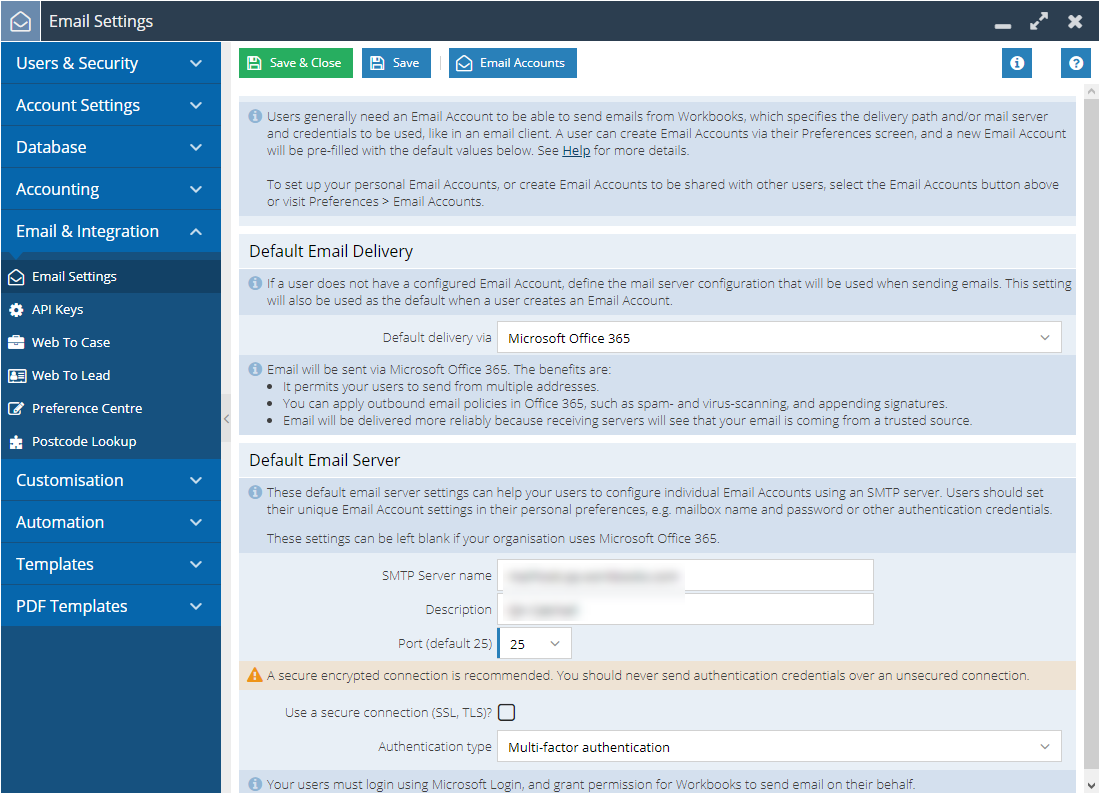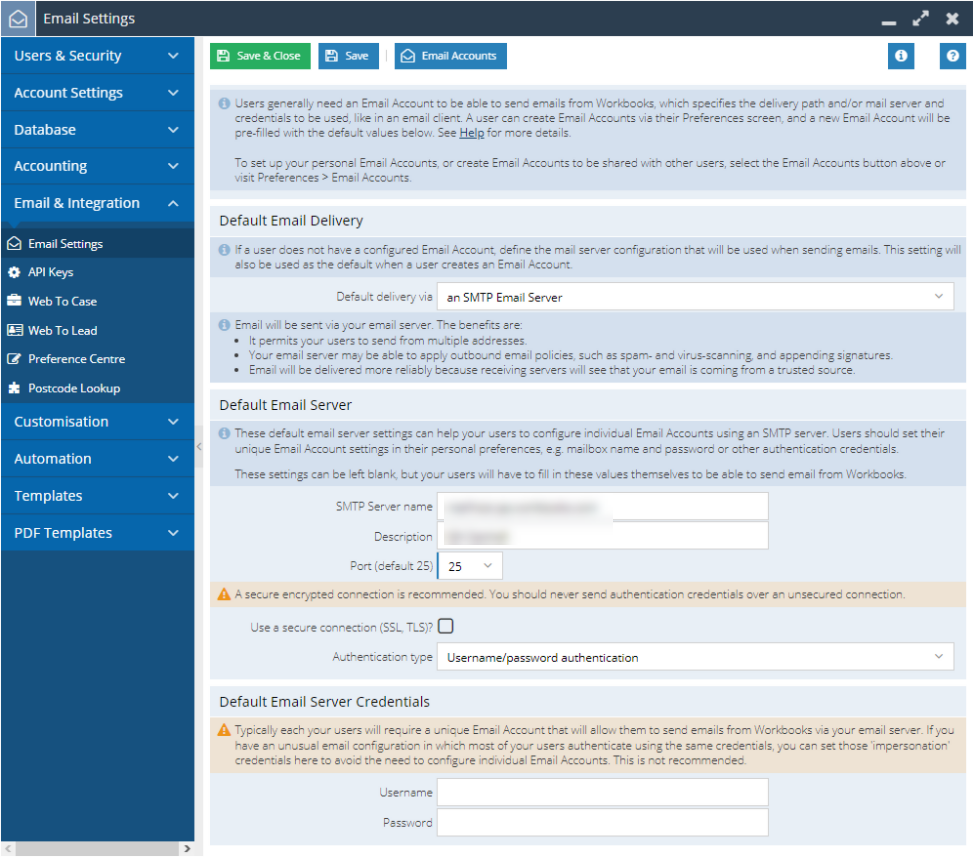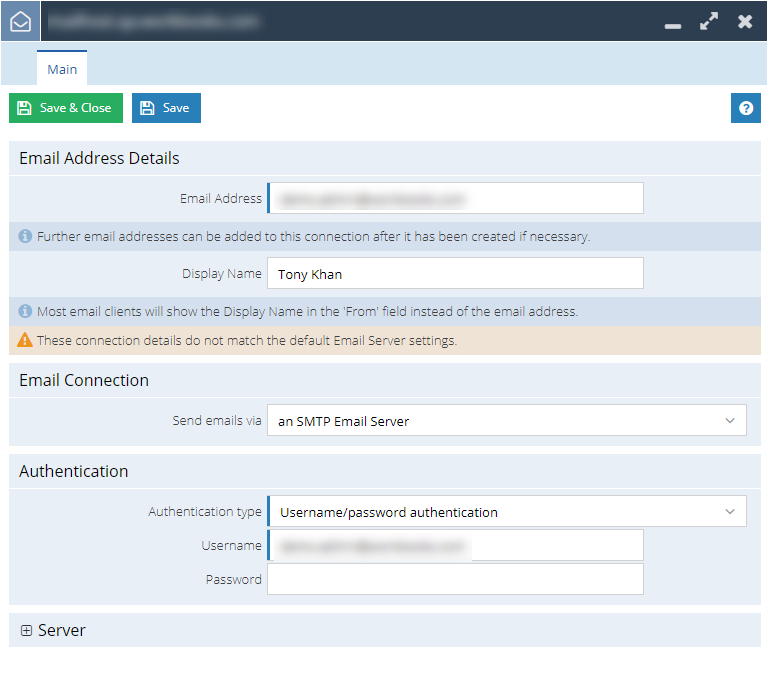- Welcome to the Knowledge Base
- Introduction
- Training
- Getting Started
- Preferences
- Activities
- Cases
- Forecasts & Quotas
- Importing Data
- Leads
-
Marketing
- Introduction to Marketing
- Marketing Campaigns
- Mailing Lists
- Products
- Mailshots
- Upload Library
- Templates
- Event Management
- Compliance Records
-
Spotler Integration
- What is Spotler?
- Navigating your Spotler homepage
- GatorMail
-
GatorLeads / Web Insights
- Tracking Code
- Setting up the Plugin
- Viewing Web Insights Data on your Form Layouts
- Domain Names and Online Activities
- Reporting incorrect Leads created through Web Insights
- Reporting on Web Insights data
- Using UTM Values
- Why aren’t Online Activities being created in the database?
- Why is GatorLeads recording online activities in a foreign language?
- GatorSurvey
- GatorWorkflow
- GatorPopup
- Opportunities
-
Integrations
- Mapping
- Electronic Signing Tools
- Creditsafe Integration
-
Zapier
- Introduction to Zapier
- Available Triggers and Actions
- Linking your Workbooks Account to Zapier
-
Setting up Zaps
- Posted Invoices to Xero Invoices
- Xero payments to Workbooks Tasks
- New Case to Google Drive folder
- New Case to Basecamp Project
- New Workbooks Case to JIRA Ticket
- Jira Issue to new Case
- 123FormBuilder Form Entry to Case
- Eventbrite Attendee to Sales Lead and Task
- Facebook Ad Leads to Sales Leads
- Wufoo Form Entry to Sales Lead
- Posted Credit Note to Task
- QuickBooks Online
- Survey Monkey responses to Tasks
- Multistep Zaps
-
Email Integrations
- Email Dropbox
- Workbooks Exchange Server Sync
- Workbooks Outlook Connector
- RevenueGrid Intelligence and Engage
-
Event & Webinar Integration Tools
- GoToWebinar
- ON24
- Microsoft Office
-
Outreach
- Installation
- Outreach Authentication
- Sync People to Outreach Prospects
- Sync Organisations to Outreach Accounts
- Sync Workbooks Opportunities to Outreach
- Sync Tasks/Activities from Workbooks to Outreach
- Sync Outreach Sequences to Workbooks
- Sync Outreach Sequence States to Workbooks
- Sync Outreach Sequence Step Numbers to Workbooks
- Sync Prospects/Accounts/Opportunities from Outreach to Workbooks
- Sync Outreach Tasks/Calls/Meetings to Workbooks
- Scribe/Workbooks Connector
- RingCentral
- Auditing
- Comments
- People & Organisations
- Projects
-
Reporting
- Introduction to Reporting
- Using Reports
- Charts
- Exporting Reports
- Advanced Reporting
- Report Snapshots
- Dashboards
-
Transaction Documents
-
Introduction to Transaction Documents
- Displaying & Adding Transaction Documents
- Copying Transaction Documents
- Transaction Documents Fields Help
- Transaction Documents Line Items Help
- Printing & Sending Transaction Documents
- Managing Transaction Document Currencies
- Managing Transaction Document Statuses
- Setting a Blank Default Currency on Transaction Documents
- Credit Notes
- Customer Orders
- Invoices
- Quotations
- Supplier Orders
- Contract Management
- Sagelink
-
Introduction to Transaction Documents
- Auditing
-
Configuration
- Introduction to System Administration
- Users & Security
- Preferences
- Database
- Accounting
- Email & Integration
-
Customisation
- Creating & Modifying Picklists
- Theme
-
Record Types
- Creating Custom Fields
- Report-based Custom Fields
- Linked Fields & Reference Fields
- Record Templates
- Form Layouts
- Customising relationships between parties
- Opportunity Stages
- Custom Records
- Automation
- PDF Configuration
- Contact Support
- Releases & Roadmap
Introduction to Email Settings
Tip
Take the time to set up at least one Email Account before trying to send email from within Workbooks.
In order for Users to be able to send emails from within Workbooks, at least one Email Account should be set up for them (just as you would for an email client). The configuration of this account needs to identify the SMTP mail server and credentials to be used. Users can create their own Email Accounts (within Preferences) or System Administrators can create Email Accounts for Users and then share the configuration with the User.
Sending Emails using Office 365
Using Office 365 has a number of advantages:
- Users can send via multiple email addresses
- You can apply outbound email policies centrally in Office 365
- Receiving servers will see that your email is coming from a trusted source
Selecting Microsoft Office 365 as the delivery type will default the Authentication Type to Multi-factor authentication, which cannot be changed.
Users then set up their own Email Accounts, either under Start > Preferences > Email > Email Accounts, or they will be prompted to do so when they first try to create a new Email. In a new window, users will also be prompted to log in using Microsoft Login, and will need to grant permission for Workbooks to send email.

Sending emails using an SMTP Email Server
Using your SMTP server to send messages has a number of advantages including:
- email is delivered via your configured email server.
- you have more flexibility - your users can be set up to send from multiple 'alias' email addresses.
- your email will be delivered more reliably since anti-spam measures typically treat email from your own server with more care.
NOTE: The ability for users to set up one or more alias addresses is controlled by Capabilities. If you want your users to be able to set up alias addresses make sure they have the following Capabilities: View Email Credentials and Manage Email Credentials.
Selecting SMTP Email Server as the delivery type will allow you to choose whether you want to use username/password or no authentication as the authentication type.
More information on setting up your email server can be found here.

If you are a System Administrator you can set up an Email Account for a user by clicking Email Accounts > New Email Account at the top of the page. Make sure to update the Sharing Permissions of the Email Account to make it accessible to the relevant users.
Users can set up their own Email Accounts by clicking Start > Preferences> Email > Email Accounts > New Email Account.
Setting up the User Email Accounts
Any of the methods above will show a screen similar to the one below when you click Email Accounts > New Email Account.

Some of these fields are already populated with information if their System Administrator has set up some default setting such as the SMTP Server name. If not, populate the fields shown and remember to extend the Sharing Permissions to the appropriate User or User Group by clicking the Sharing Permissions padlock icon in the top right and editing the permissions accordingly.
Users will also be prompted with this setup screen if they haven't already set up an email account and attempt to send an email via Emails > New Email.
NOTE:
- When you enter your password, ensure you then click 'Save & Close', as otherwise Workbooks will clear the password field for security reasons and you will get authentication errors if you try to send.
- If you need to use authentication in order to send email and your password for your email changes at any time, you will need to update your email account settings in Workbooks to ensure that it uses the same password.
Sending emails using Workbooks
If no Email Account has been set up for a User, it's possible to use a 'fallback' delivery mode, which routes outbound emails constructed within Workbooks via the Workbooks email server. This is not recommended except as a shortcut when you are first evaluating Workbooks, or if the only emails you send from Workbooks are internal, as Workbooks is not a recognised Email Server and emails often end up in Spam.
More information on setting up email via Workbooks Server can be found here.
NOTE: If you're using Workbooks free edition you are not licensed to send emails via the Workbooks server.
Related content

